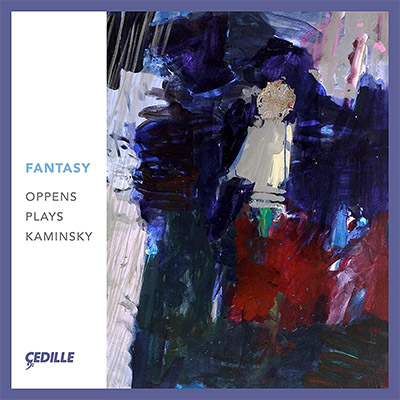by Cait Winston

Fantasy begins with a piano quintet in which Oppens is joined by the Cassatt String Quartet. The first movement, “Anthem,” is driven forward by rhythmic material inspired by the West African drumming patterns that Kaminisky studied during her time in Ghana. In “Anthem,” musical motives are layered on top of one another, creating a thrillingly complex rhythmic world. By contrast, the harmonies remain expansive and largely consonant.
The buoyancy of “Anthem” is countered by the solemn and at times anxious second movement, “Lamentation (Coming into Light),” introducing feelings of conflict and unrest. The third movement, “Maelstrom, And…” pits ideas of hopefulness and instability against one another. A steady, beautifully optimistic solo melody is passed around the five instruments and juxtaposed by dissonant cluster harmonics. By the end of the quintet, hope is victorious as all five voices unite in a rich, consonant sonority.
Contrasting ideas of progress towards peace with dissolution into chaos are explored in 5 Miniatures of America “Reckoning,” a series of four-hand piano pieces that Oppens performs with Jerome Lowenthal. According to Kaminsky’s program note, these pieces are meant to express the “tumultuousness of the political landscape” and the“piercing divide in the social compact” that characterized the second half of the 2010’s. Throughout the miniatures, we hear once stately, self-assured and hopeful musical passages dissolve into a chaotic jumble of notes — but we also hear stable cadences emerge from highly dissonant material. The set of miniatures ends abruptly on a rather dissonant chord in the low rumbling register of the piano, withholding a sense of resolution between the conflicting ideas.
Each musical idea, whether hopeful or anarchic, is made richer and more poignant by two additional hands on the piano, giving evidence of Kaminsky’s omnipotent grasp of form, as well as of Oppens’ and Lowenthal’s impenetrable synergy.
While the Piano Quintet and Reckoning comment on the sentiments of the current times, Fantasy also features Kaminsky’s compositions written within the last decade: a piano concerto performed by Oppens and the Arizona State University Symphony and the album’s namesake, the solo piano piece Fantasy, a free-form work that brings a highly improvisatory voice to the album. Here, harmonic, rhythmic, and melodic material are germinated from simple ideas that unsystematically grow into complex sonorities. The overall tone is joyful, if sometimes untidily so, and falls in and out of clear harmonic and rhythmic structures.
In Fantasy, Oppens and Kaminsky work as one cooperative unit to ensure that the listener reflects on the social divisions that surround them, but remains ultimately hopeful. Fantasy is available to purchase here, and can be accessed on Spotify or Apple Music.
Published on ClevelandClassical.com June 9, 2021.
Click here for a printable copy of this article



